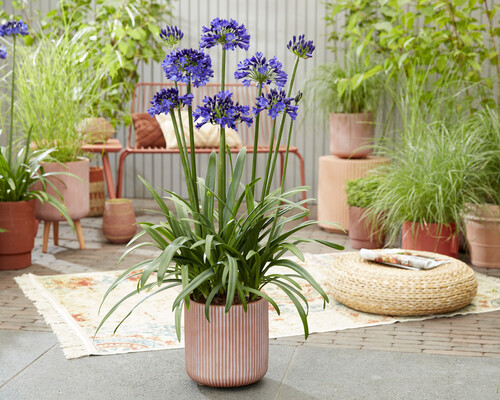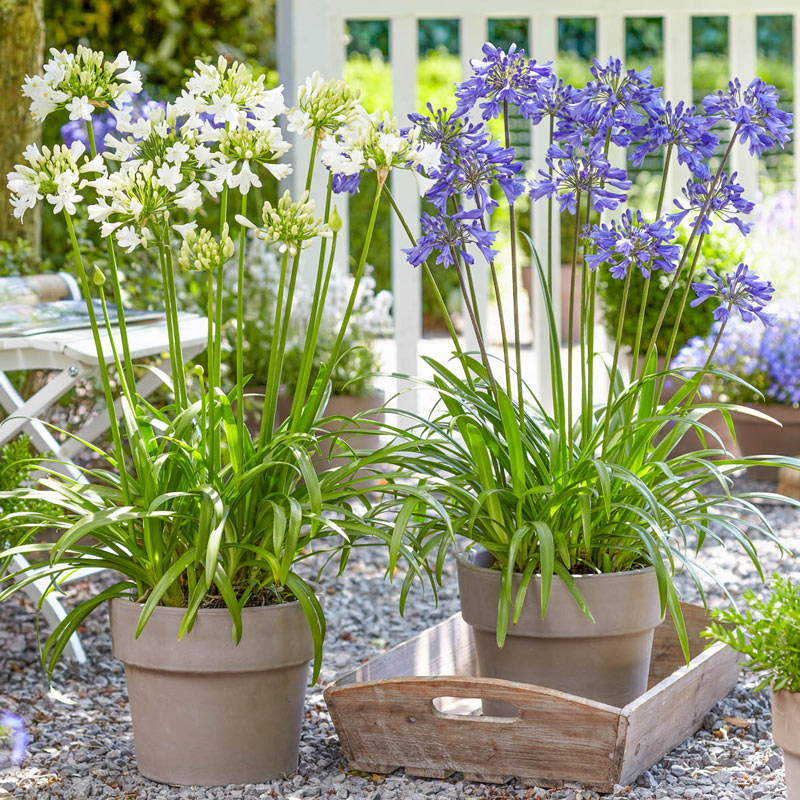Understanding the Art of Agapanthus Treatment: Vital Actions for Healthy Development and Dynamic Blossoms
In the world of cultivation, the farming of agapanthus stands as a rewarding undertaking for those that seek to support these classy flowering plants. With their striking blooms and graceful foliage, agapanthus has actually caught the attention of garden enthusiasts worldwide. Nevertheless, attaining ideal development and vibrant blossoms requires a nuanced method that incorporates different crucial actions. From picking the best variety to mastering trimming strategies, the trip towards cultivating growing agapanthus plants is multifaceted and holds the vital to opening the full potential of these botanical gems.

Picking the Right Agapanthus Range

When selecting the appropriate Agapanthus variety for your yard, think about factors such as environment viability, flower shade, and development practice. Agapanthus, frequently called Lily of the Nile or African lily, can be found in a selection of colors varying from tones of blue and purple to white. Select a flower color that matches your existing garden scheme to produce a harmonious landscape. Additionally, take into consideration the environment in your region to ensure the Agapanthus variety you select can prosper in your details problems. Some selections are a lot more forgiving of cold temperature levels, while others choose warmer climates. Understanding the growth routine of various Agapanthus varieties is crucial for appropriate placement within your garden. Some ranges have a clumping development practice, suitable for borders or containers, while others have a more spreading nature, appropriate for ground cover or mass plantings. By thoroughly reviewing these elements, you can select the best Agapanthus range to boost the charm of your yard.
Perfect Planting Problems
Taking into consideration the ideal environmental requirements is essential for successful Agapanthus growing. Agapanthus plants are sensitive to cool temperatures and should be protected from frost throughout winter months.
To guarantee healthy and balanced development and lively blooms, plant Agapanthus light bulbs at a depth of concerning 2-4 inches and area them 8-12 inches apart. Mulching around the base of the plants aids preserve dampness and subdues weed growth.
Watering and Feeding Tips
Maintaining proper moisture degrees and offering crucial nutrients are crucial elements in the care routine for Agapanthus plants. When it involves sprinkling Agapanthus, it is vital to strike a balance. These plants favor continually wet soil but are prone to root rot if overwatered. Throughout the growing season, water deeply as soon as a week, ensuring the dirt is well-draining to avoid waterlogging. In hotter climates or throughout periods of drought, even more regular watering may be essential to maintain the soil uniformly wet. However, reduce watering in the winter months to protect against water logged problems.
Fertilizing Agapanthus is necessary for advertising healthy development and respected flowers. Apply a balanced plant food, such as a 10-10-10 formula, in the very early spring as new development emerges. Repeat this application every 6-8 weeks his comment is here throughout the expanding period. Prevent extreme fertilization, as it can result in lush foliage at the expense of blossoms. Constantly adhere to the supplier's guidelines for correct dilution and application approaches. By following these watering and feeding ideas, you can ensure your Agapanthus plants flourish and create dynamic, long-lasting flowers.
Trimming Strategies for Agapanthus
Trimming Agapanthus plants at the suitable times and with appropriate methods is critical for maintaining their health and wellness and promoting optimal growth and blooming. The perfect time to prune Agapanthus why not try these out is in late winter or early spring prior to new development emerges.
Deadheading spent flowers can additionally reroute the plant's energy into producing more blossoms instead than establishing seeds. If you want to gather seeds for propagation, leave some flowers to mature and completely dry on the plant.
Keep in mind to make use of tidy, sharp devices to make precise cuts and decrease the risk of introducing conditions. Agapanthus. Normal trimming will certainly help maintain your Agapanthus looking healthy and balanced and cool while guaranteeing a plentiful display of attractive blooms
Dealing With Typical Parasites and Illness
After making certain appropriate trimming techniques for Agapanthus, it is vital to deal with common parasites and illness that can affect the health and vitality of these plants. One typical bug that influences Agapanthus is the Agapanthus gall midge.
Furthermore, Agapanthus plants can experience from origin rot if they are grown in poorly draining pipes soil. By being watchful and taking prompt activity against illness and insects, you can help your Agapanthus plants grow and create lively blooms. Agapanthus.

Verdict
In final thought, understanding the art of agapanthus treatment involves selecting the ideal selection, giving optimal growing conditions, correct watering and feeding, ideal trimming strategies, and dealing with typical parasites and illness. By following these essential steps, you can guarantee his response healthy and balanced development and lively blooms for your agapanthus plants. Remember to consistently monitor and keep your plants to advertise their total well-being and long life.
To make sure healthy and balanced growth and dynamic flowers, plant Agapanthus bulbs at a depth of regarding 2-4 inches and space them 8-12 inches apart. By adhering to these watering and fertilizing tips, you can ensure your Agapanthus plants prosper and produce dynamic, durable blooms.
One common parasite that impacts Agapanthus is the Agapanthus gall midge. In addition, Agapanthus plants can experience from origin rot if they are planted in inadequately draining soil. By following these necessary actions, you can guarantee healthy development and vibrant blooms for your agapanthus plants.